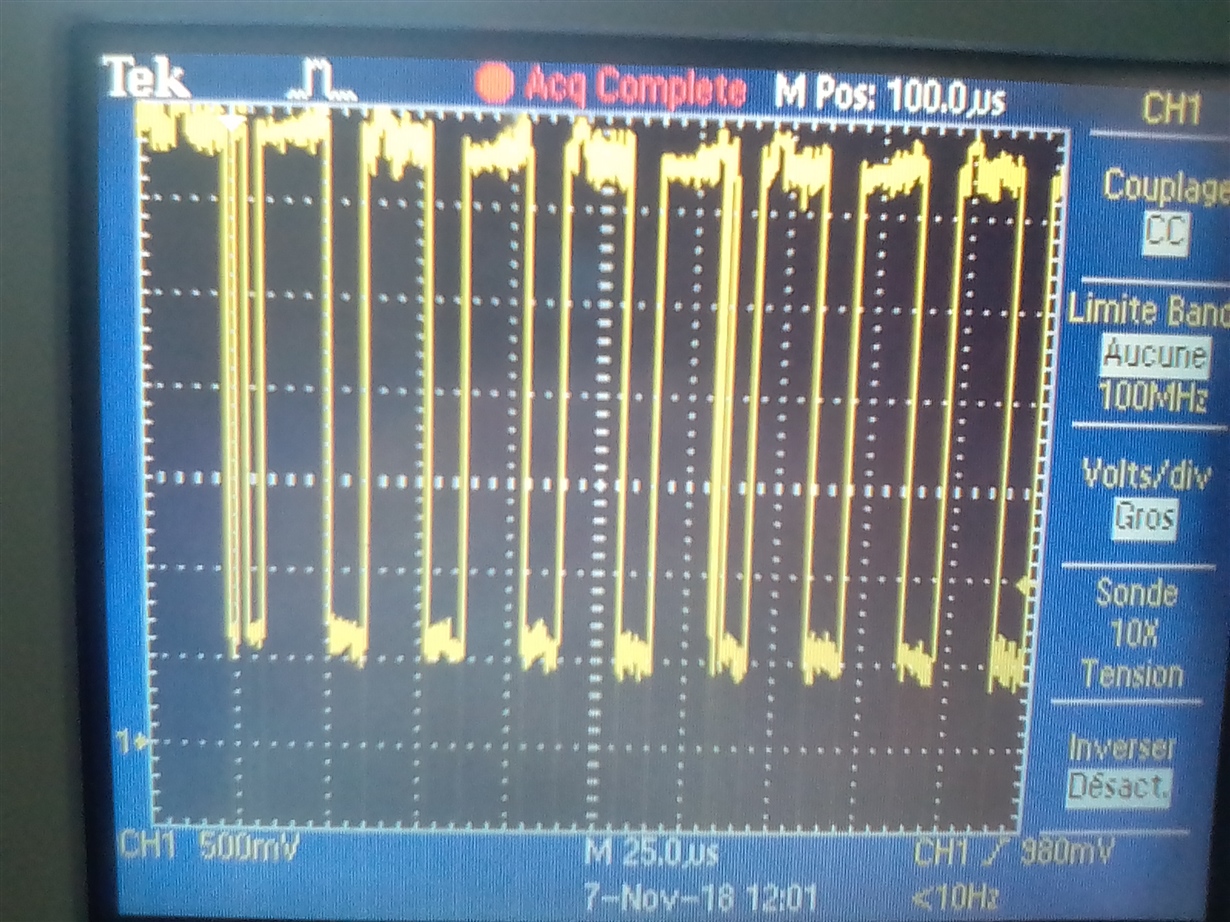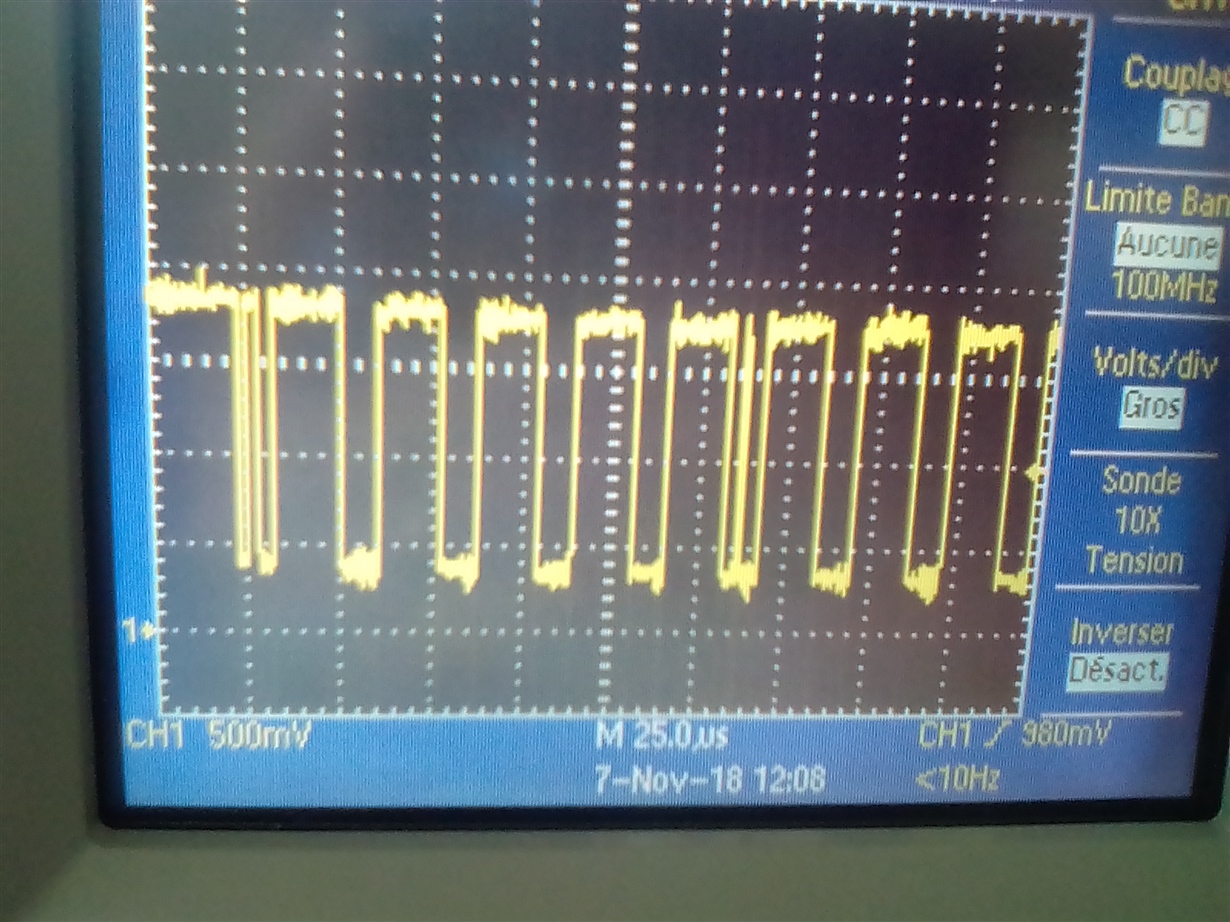Other Parts Discussed in Thread: LSF0102
Hello,
I currently use a LSF0108 to perform +3.3V to/from +1.8V translation on a first board. Conversion is OK.
In some case, I need to cascade 2 LSF: connect first previous board (and so using first LSF +3.3V <-> +1.8V) to a second board (and so using a second LSF +1.5V <-> +3.3V).
Problem occurs in such situation: +1.8V -> +3.3V -> +1.5V.
When my device at +1.8V logic outputs a logical zero, Ax signal (first LSF) is around 0.6V (I suppose it corresponds to the Vab voltage described in video 'Down translation with the LSF family'). As voltage at Bx is slighty higher than Ax, Bx of first LSF is around 0.65V and again Ax of second LSF is around 0.7mV... which is higher than the Vil of my device (0.35x1.5V=0.525V) and so sampling data at +1.5V fails.
I am a bit confused with the 0.6V. Does it seem to be a bit too high? Is it a correct behaviour? How can we evaluate this Vab?
For information:
- 'A' port of +1.8v->+3.3V has no pull-up
- 'B' port of +1.8v->+3.3V has one pull-up (200ohms)
- 'B' port of +3.3v->+1.5V corresponds to the same connection of previous (so same pull-up 200ohms)
- 'A' port of +3.3v->+1.5V has no pull-up
May I need to have higher resistance to minimize sink current?
Many thanks.







